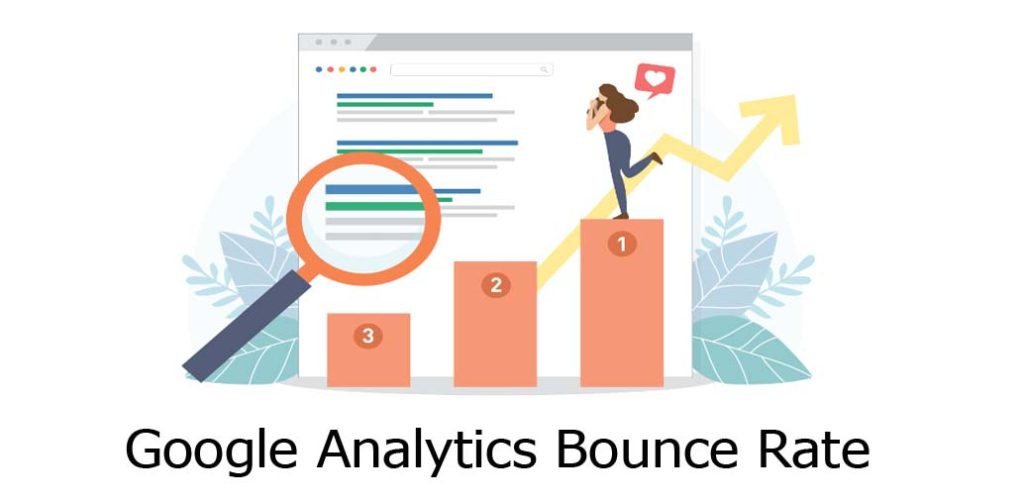What is Google analytics bounce rate? Bounce Rate is defined as the percentage of visitors that leave a webpage without taking an action, such as clicking on a link, filling out a form, or making a purchase. Someone that bounces from your site (obviously) didn’t convert. So when you stop a visitor from bouncing, you can also increase your conversion rate. Bounce Rate is important for three main reasons:
- Bounce Rate may be used as a Google Ranking Factor. In fact, one industry study found that Bounce Rate was closely correlated to first page Google rankings
- Bounce rate is closely correlated to first page Google rankings
- A high Bounce Rate lets you know that your site (or specific pages on your site) has issues with content, user experience, page layout, or copywriting.

What Is The “Average” Bounce Rate?
The average Bounce Rate range is between 41 and 51%. So if you’re looking to figure out what a good Bounce Rate is, make sure that you’re comparing your site to other sites in your category. Also, your site’s traffic sources can dramatically impact your site’s Bounce Rates. It should be of note that email and referral traffic had the lowest Bounce Rate.
How to Interpret Bounce Rates
The height of your bounce rate and whether that’s a good or a bad thing depends on the purpose of the page. If the purpose of the page is purely to inform, then a high bounce rate isn’t a bad thing per se. Of course, you’d like people to read more articles on your website, subscribe to your newsletter, and so on. But when they’ve only visited a page to, for instance, read a post or finds an address, then it isn’t surprising that they close the tab after they’re done reading. Mind you, even in this case, there’s no trigger sent to the Google Analytics server, so it’s a bounce.
A clever thing to do, when you own a blog, is creating a segment that only contains ‘New visitors’. If the bounce rate amongst new visitors is high, think about how you could improve their engagement with your site. This is because you do want new visitors to engage with your site.
If the purpose of a page is to actively engage with your site, then a high bounce rate is a bad thing. Let’s say you have a page that has one goal: get visitors to subscribe to your newsletter. If that page has a high bounce rate, then you might need to optimize the page itself. By adding a clear call-to-action, a ‘Subscribe to our newsletter’ button, for instance, you could lower that bounce rate.
However, there can be other causes for a high bounce rate on a newsletter subscription page. In case you’ve lured visitors in under false pretenses, you shouldn’t be surprised when these visitors don’t engage with your page. They probably expected something else when landing on your subscription page. On the other hand, if you’ve been very clear from the start about what visitors could expect on the subscription page, a low bounce rate could say something about the quality of the visitors.
More Posts
